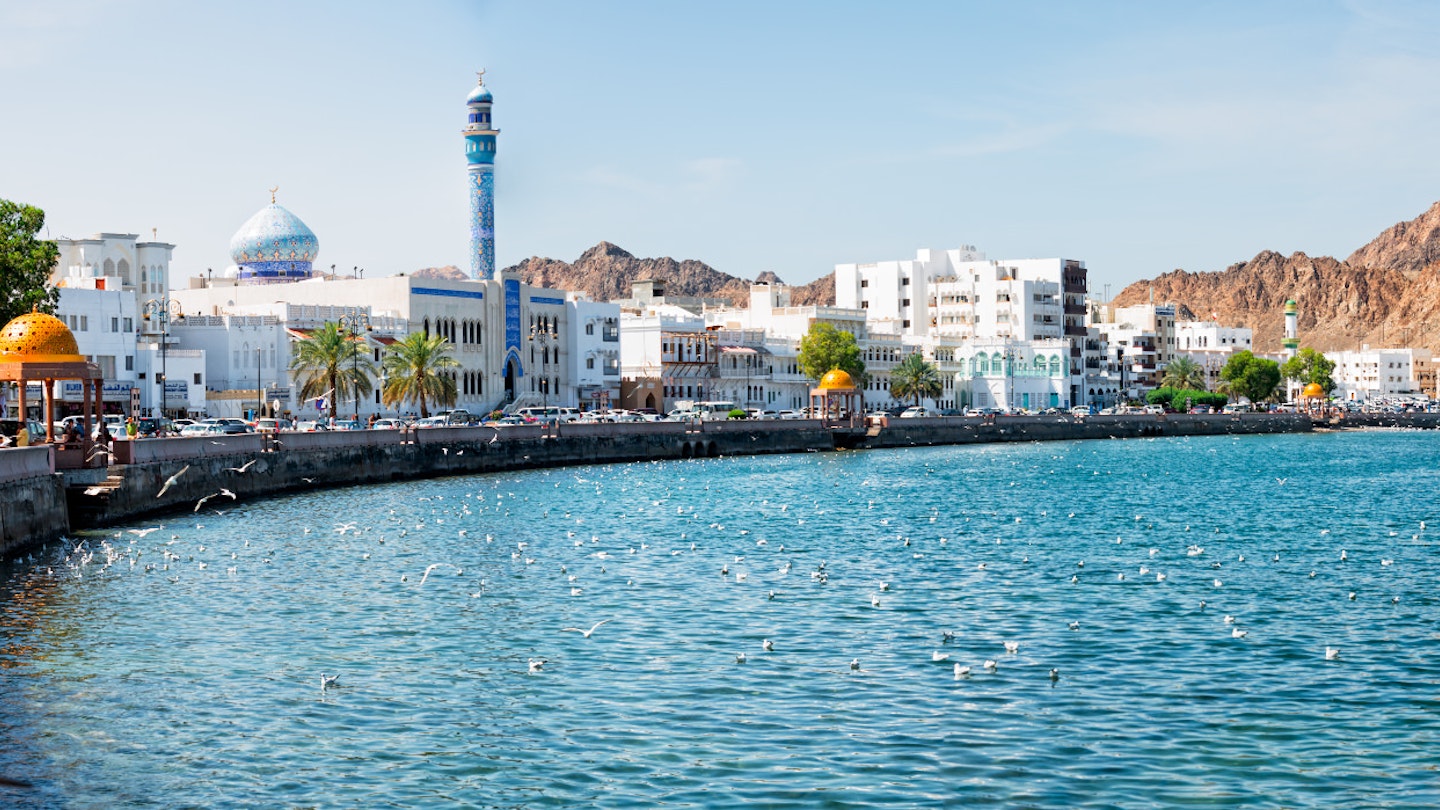Share
Sep 30, 2016 • 4 min read

Engage with the Sea
In many ways, Muscat (meaning ‘anchorage’) is all about the sea, and fishing remains a vital industry. As you walk along Mutrah Corniche, from the new fish market to the souq, the capital’s identity is clearly influenced by its bustling port. Naval vessels and cruise ships mingle with traditional wooden dhows and fishing boats that dot the harbor. Visitors can indulge in some of Muscat’s best experiences associated with the sea, such as enjoying the calm waters at Shangri-La’s Barr al Jissah Resort & Spa, tasting grilled hamour at the renowned seafood restaurant The Beach, or sipping a sundowner with sea views in one of the city’s luxurious hotels. For breathtaking views of the shore, head to Marina Bandar Al Rowdha, where boats embark at dawn, often accompanied by dolphins, heading to the snorkeling paradises of Bandar Khayran.

Learn About Oman’s Past
Oman’s remarkable transformation over the past fifty years is attributed to prudent governance and the wealth generated from oil. The National Museum located in the heart of old Muscat narrates the story of Oman’s revival under the esteemed leadership of Sultan Qaboos. Visitors can capture memorable snapshots in front of the enchanting Sultan’s Palace or explore the nearby Bait Al Zubair, a traditional villa filled with exquisite Omani crafts, to immerse themselves in Muscat’s vibrant history. Alternatively, the Ghalya Museum of Modern Art on Mutrah Corniche provides a unique perspective on Muscat life prior to the Omani Renaissance that began in 1970.

Dine Out – The Local Way
For those craving local flavors, Muscat is embracing a movement to showcase Omani cuisine. Previously, the culinary experiences in Muscat were largely limited to traditional halwa (a gel-like sweet) and dates with qahwa (Arabic coffee) primarily served during official events. The peak of this culinary journey was often found in trying shuwa (roasted lamb or goat, traditionally cooked in the sand) at pan-Arab eateries like Kargeen Cafe. While you can still enjoy authentic Omani dishes at places like Bin Ateeq, the dining landscape has evolved to include fine dining experiences like Bait Al Luban, an enchanting restaurant housed in a renovated trader’s house in Mutrah, offering a diverse selection of national specialties, including the comforting harees.

Shop for Gold, Frankincense, and Myrrh
Shopping is a cherished pastime for Peninsula Arabs, and while Muscat may not rival nearby Dubai in terms of extravagant malls, it compensates with unique character. No visit to Muscat is complete without wandering through the maze-like Mutrah Souq, where Indian traders have showcased their goods for centuries. The air is fragrant with luban (frankincense) and lined with displays of gold, representative of bridal dowries. Additionally, areas around Qurm offer camel-bone boxes, chocolate-covered dates, Persian carpets, Azerbaijani rugs, semi-precious stone beads, and delicate pashminas. For hard-to-find local crafts like camel-leather baskets or goat-hair rugs, a visit to the Omani Heritage Gallery in Qurm is worthwhile.

Add an Extra Day
With a well-developed road network stemming from the Omani Renaissance, an additional day allows travelers to embark on a day trip from the capital to explore the enchanting ‘interior’. One excellent option includes a loop around the Batinah Plain, starting in the historic castle town of Nakhal. Here, you can visit the fort, observe vibrant Indian rollers as they dart through date plantations, and take a relaxing pause at the hot springs. Proceed along the foot of the majestic Hajar Mountains to Rustaq, another former capital, which is crowned by yet another Oman Fort. Finally, return to Muscat via Sawadi, renowned for its beach adorned with pink top shells and islands accessible by foot during low tide.





